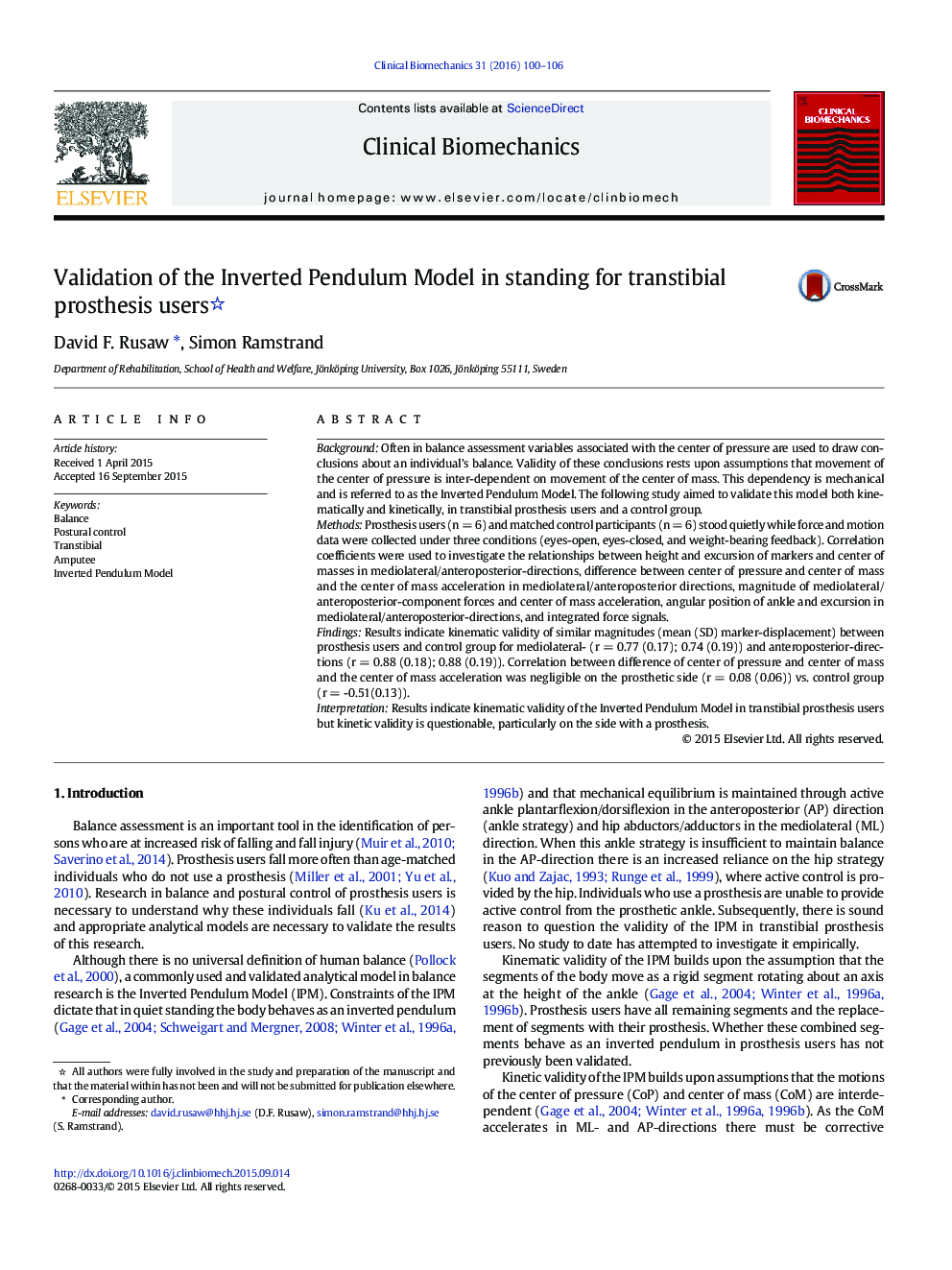| Article ID | Journal | Published Year | Pages | File Type |
|---|---|---|---|---|
| 4050175 | Clinical Biomechanics | 2016 | 7 Pages |
•There is kinematic validity of the Inverted Pendulum Model when observing standing in transtibial prosthesis users.•There is little kinetic validity of the Inverted Pendulum Model when observing standing in transtibial prosthesis users on the side with a prosthesis.•Interpretation of standing balance using center of pressure variables must account for the lack of validity on the side with a prosthesis.
BackgroundOften in balance assessment variables associated with the center of pressure are used to draw conclusions about an individual’s balance. Validity of these conclusions rests upon assumptions that movement of the center of pressure is inter-dependent on movement of the center of mass. This dependency is mechanical and is referred to as the Inverted Pendulum Model. The following study aimed to validate this model both kinematically and kinetically, in transtibial prosthesis users and a control group.MethodsProsthesis users (n = 6) and matched control participants (n = 6) stood quietly while force and motion data were collected under three conditions (eyes-open, eyes-closed, and weight-bearing feedback). Correlation coefficients were used to investigate the relationships between height and excursion of markers and center of masses in mediolateral/anteroposterior-directions, difference between center of pressure and center of mass and the center of mass acceleration in mediolateral/anteroposterior directions, magnitude of mediolateral/anteroposterior-component forces and center of mass acceleration, angular position of ankle and excursion in mediolateral/anteroposterior-directions, and integrated force signals.FindingsResults indicate kinematic validity of similar magnitudes (mean (SD) marker-displacement) between prosthesis users and control group for mediolateral- (r = 0.77 (0.17); 0.74 (0.19)) and anteroposterior-directions (r = 0.88 (0.18); 0.88 (0.19)). Correlation between difference of center of pressure and center of mass and the center of mass acceleration was negligible on the prosthetic side (r = 0.08 (0.06)) vs. control group (r = -0.51(0.13)).InterpretationResults indicate kinematic validity of the Inverted Pendulum Model in transtibial prosthesis users but kinetic validity is questionable, particularly on the side with a prosthesis.
